Experimental archaeology can provide new insights into old “truths.” Among the many mysteries of the Oseberg find are the so-called “rattles.” Could they have been something entirely different?
By Einar Chr. Erlingsen
When archaeologists discover objects, whose original use is unknown to the modern world, they often categorize them as “cult objects.” This is also the case with the mysterious “rattles” from Oseberg: iron-forged loops equipped with rings, hooks—and sometimes handles with remnants of rope.
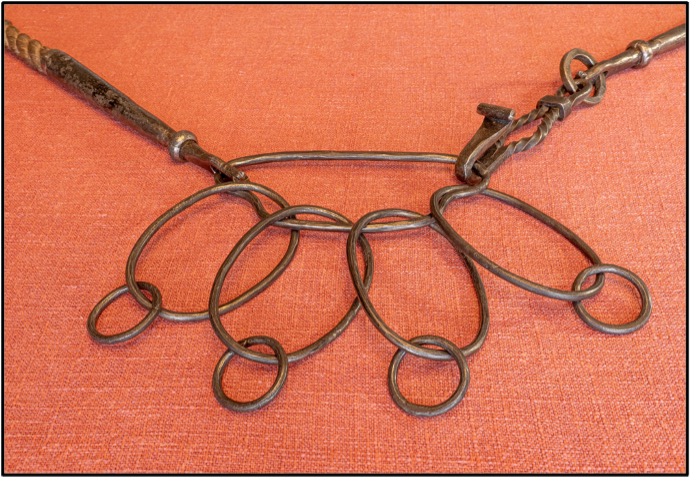
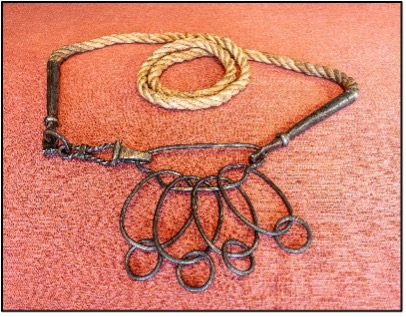
Among the many fascinating professional presentations at this year’s Viking Festival in Tønsberg was archaeologist Beate Krydsby Kåresen’s lecture, based on her master’s thesis *A Functional Analysis of the Rattles and Hooks of the Viking Age* (UiO 2024) (Kåresen 2024). Her thesis is based on the hypothesis that the “rattles” are something entirely different: that they were used as cargo straps on sleds. The Oseberg Viking Heritage Foundation, primarily represented by our department head Tore Forsberg in Sandefjord, contributed by fastening the separate hooks and testing the hypothesis through practical use.
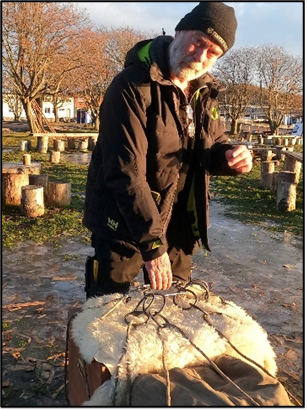
Thorough Testing
Krydsby Kåresen conducted a very thorough investigation, comparing similar finds from other parts of the country with the “rattles” from Oseberg. She also studied the context in which the objects were found in the grave. Replicas of two rattles were forged by Steven Carpenter from Kongsberg, while three of the hooks were forged by Krydsby Kåresen. The sledding community around Rørosmartnan was an important contributor in understanding the practical challenges of sled transport and participated in testing the hypothesis.
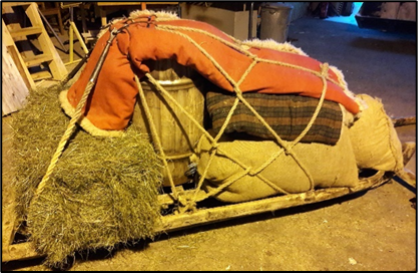
The rattles were also tested on a dog sled to see if they could secure cargo under challenging conditions.
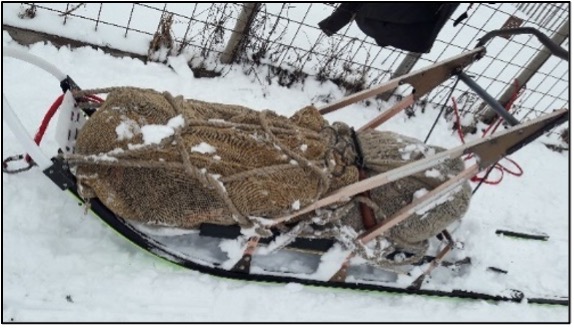
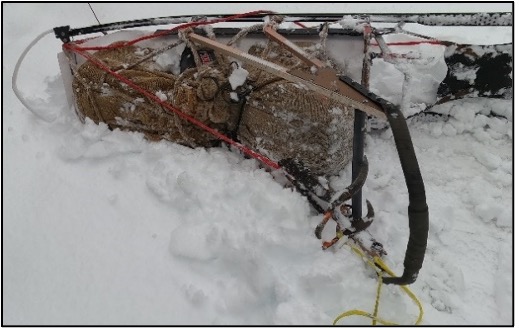
Three different use scenarios were visualized on a sled replica from Oseberg:
- A Viking merchant with his goods on the sled.
- A male Viking burial with the deceased placed on a sled under a shield.
- A female burial with typical grave goods.
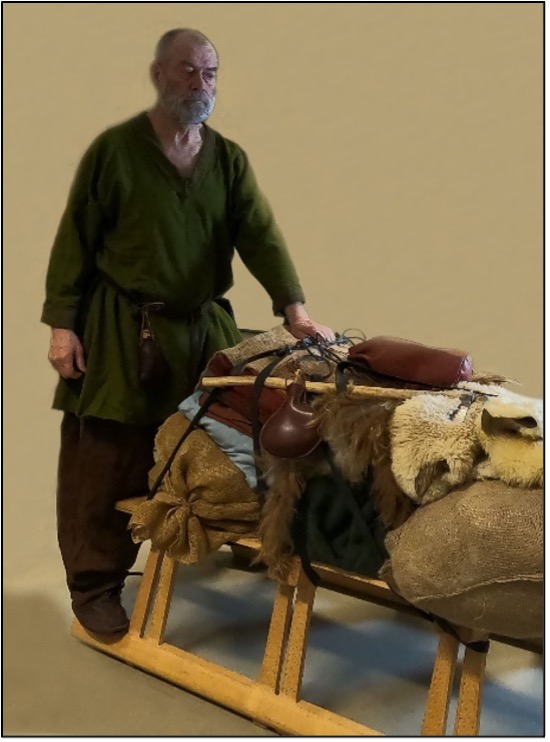
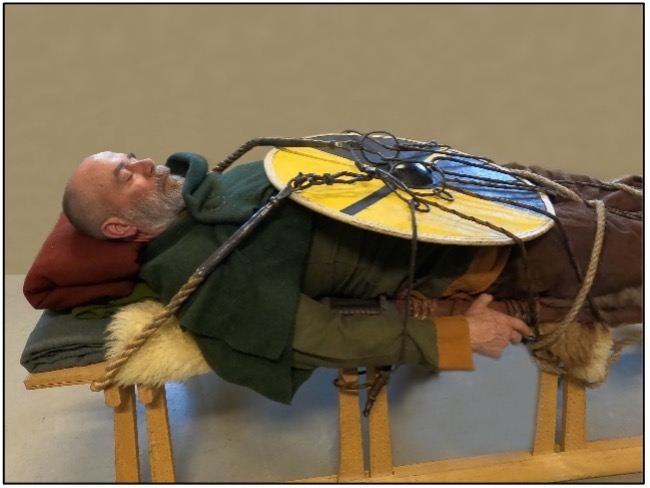
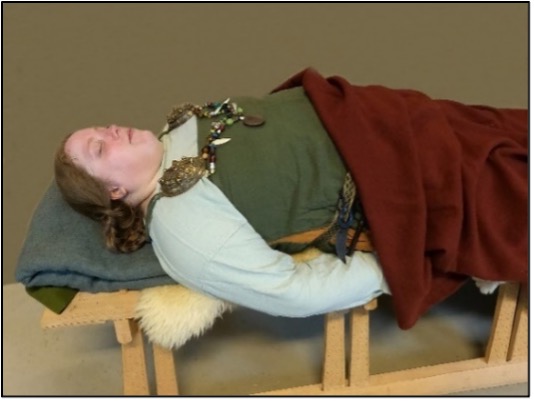
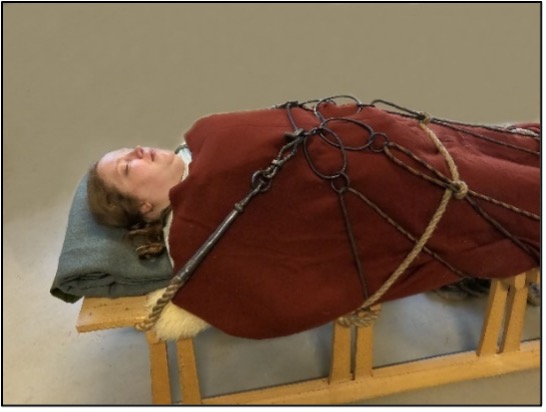
The visualization supported the hypothesis that the “rattles” could have functioned as cargo straps.
A Roadless Society
There were few roads in Viking society. Transport of goods typically occurred by ship in the summer, but winter opened new pathways; much of the transport then took place on frozen rivers and lakes. And for that, sleds were needed.
Sleds were likely used in connection with burials, and some were buried with the deceased (Lie and Stylegar 2023). Four sleds were found in the Oseberg mound, and a sled was also found in the Gokstad ship. Until now, relatively little research has been done on these sleds, but that is beginning to change.
New Research Project on Viking Age Sleds
Cultural Heritage/Vestfold County has established a research project around these sleds, in collaboration with, among others, the sledding community in Røros and Oseberg Viking Heritage. The latter will create replicas of two sleds, one from Oseberg and one from Gokstad. These replicas will likely be used to further test the replicas of the “rattles.” The replicas will be placed at the Midgard Viking Center in Borre to allow easy access for continued testing. Other groups are also welcome to contact Midgard to further research the use of the rattles as tools for securing loads on sleds.
“Experimental archaeology cannot, by itself, prove that the hypothesis is correct. But through a multifaceted approach, I believe we see strong indications that the ‘rattles’ and hooks were indeed used to secure loads. However, more research is needed,” says Beate Krydsby Kåresen.
Sources
Kåresen, B. K.
2024 A Functional Analysis of the Rattles and Hooks of the Viking Age*. Master’s Thesis, Department of Archaeology, Conservation and History, University of Oslo. https://www.academia.edu/123387822
Lie, R. O., and F. A. H. Stylegar,
2023 Sleds in Viking Age Vestfold – The Forgotten Burial Custom. Vestfoldminne
2023.: 73-86. https://www.academia.edu/106257275


Almost the same rattle is in Moesgaard museum Århus